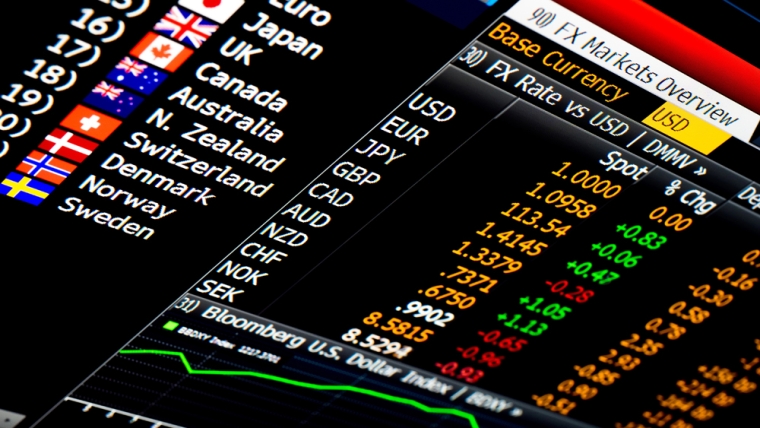
Trump’s tariff policy is back in the headlines, as the key 9-July date approaches, which was the deadline for the end of the pause in reciprocal tariffs that were announced on Liberation Day. Ahead of that date, threats of higher tariffs have begun to be rolled out and markets are not liking it, although the new deadline for negotiation is now 1-August. US equities are lower, US Treasury yields are higher with a steeper curve, and the USD is broadly stronger, with the NZD probing sub -0.60.
There was plenty of warning on Friday that this could be a tumultuous week in markets, when Trump’s tariff policy returned to the headlines and he said he would be starting to send out letters to trading partners, warning them of their new tariff rates, due to be implemented 1 August.
That process began overnight, with Japan and South Korea being the first two countries in the firing line. On Truth Social, Trump posted the letters he sent to their leaders, outlining the plan to raise their tariff rates to “only” 25%, line with the figures threatened on Liberation Day (Japan’s was initially set at 24%, South Korea was 25%). Within the last hour, Trump has also announced new tariff rates for Kazakhstan (25%), Laos (40%), Malaysia (25), Myanmar (40%) and South Africa (30%).
We can expect more letters to be “announced” at any given moment, that will keep markets on tenterhooks, with Trump’s spokeswoman saying there will be other countries getting notification today and additional letters over coming days. For the countries that face higher tariffs, there will still be time to negotiate, ahead of the new 1-August deadline for implementation. Negotiation would be the best next step for these countries, with the letter saying that any retaliation would be met with higher tariffs. South Korea doesn’t seem to have much leverage, given its free-trade agreement with the US sees almost all of Korea’s tariffs for US imports already at zero.
The EU said it was closing in on a trade framework agreement with the US, following a weekend call between Trump and EC President von der Leyen. Reuters reported that the EU won’t be receiving a letter from the US on higher tariffs.
During NZ trading hours, President Trump said he would put an additional 10% tariff on any country aligning themselves with “the Anti-American policies of BRICS”. This comment came after the BRICs group of countries – that includes Brazil, Russia, India and China – issued a statement in the weekend condemning US and Israeli attacks on Iran and called for Israel to withdraw troops from the Gaza strip, urging “just and lasting” solutions to Middle east conflicts.
With the warning given on Friday, markets opened the new week with weaker risk sentiment and risk assets extended losses overnight. With an hour left of trading, the US S&P500 is down close to 1%, with Tesla being the worst performing stock, down over 7% after Elon Musk announced a new political party to take on the establishment. The Euro Stoxx 600 closed up 0.4%, but the market was closed just ahead of the tariff announcement for Japan and South Korea.
Treasury yields are higher across the curve, led by the long end, with investors worried about the potential fallout of US tariffs and the market needing to absorb new supply of 3, 10, and 30-year debt auctions this week. Relative to last week’s close, ahead of the Independence Day holiday, the 2-year rate is up 2 bps to 3.90%, the 10-year rate is up 5bps to 4.39% and the 30-year rate is up 7bps to 4.93%.
In the currency market, the theme has been broad USD strength, with commodity currencies underperforming alongside a weaker yen and Korean won. Dollar indices are up between 0.4-0.6%. The NZD is trading down 1% from last week’s close to around 0.60, after falling to a low just below 0.5990 last night. The AUD has followed the same path, trading close to 0.65. JPY and KRW have both fallen just over 1% and NZD/JPY is higher at 87.7.
The underperformance of the NZD against European currencies, sees NZD/EUR and NZD/GBP crosses lower, the latter down 0.7% from last week’s close, pushing towards 0.44.
The domestic rates market was uneventful, with NZGB and swap rates down 1-2bps across the curves out to 10-years maturity. There should be a bit more price action day, with the Australian 10-year bond future up 5bps in yield terms since the NZ close.
In the day ahead the focus will be on the RBA policy meeting this afternoon, where there is a strong consensus for the Bank to deliver another 25bps rate cut, taking the cash rate target down to 3.60%. This is almost fully priced and with about 90bps in cuts priced cumulatively through the coming year, the market will be looking for hints that the Bank sees scope for plenty of further easing ahead.

We welcome your comments below. If you are not already registered, please register to comment
Remember we welcome robust, respectful and insightful debate. We don't welcome abusive or defamatory comments and will de-register those repeatedly making such comments. Our current comment policy is here.